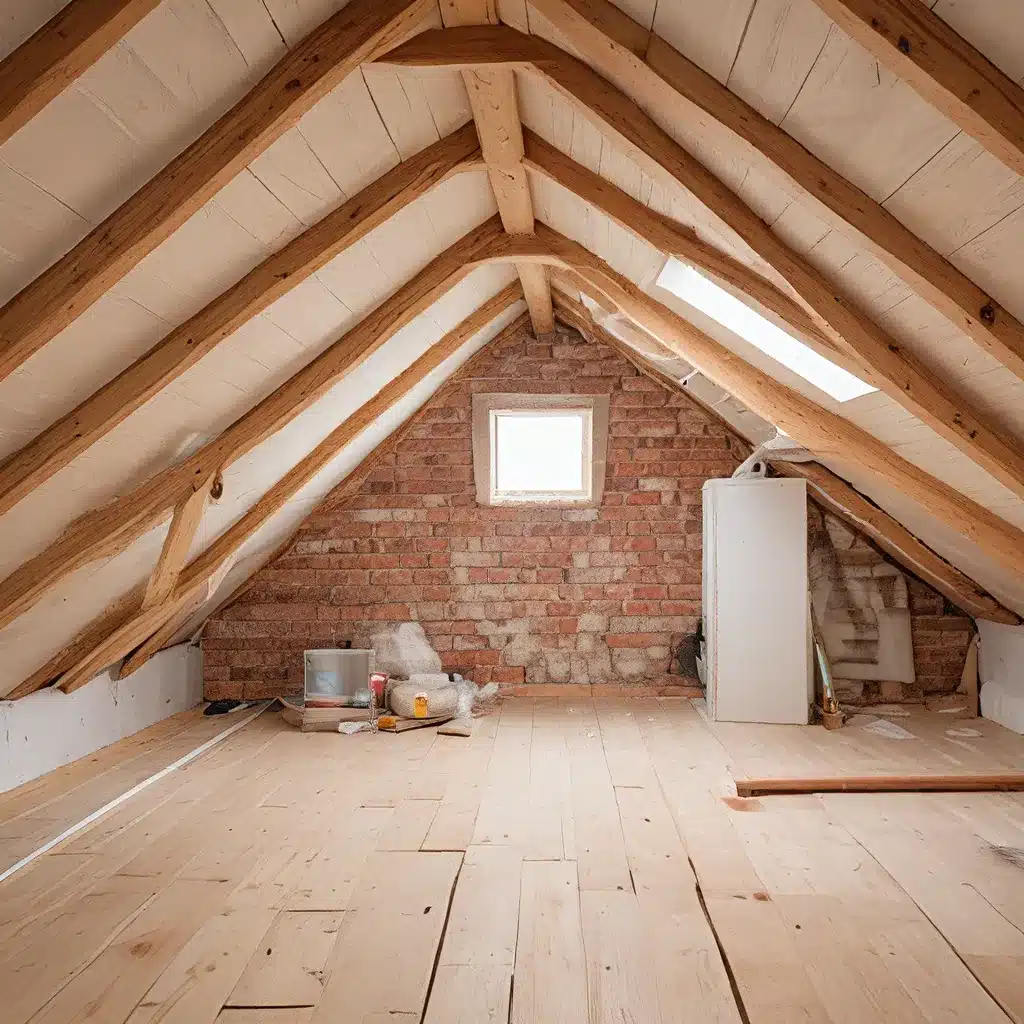
Ah, the humble attic – that oft-overlooked space above our heads that can make or break the comfort and efficiency of our homes. As someone who’s been up in those dusty rafters a time or two, let me tell you, the challenges of inadequate ventilation are real, and they can be a real pain in the… well, you know.
But fear not, my friends! Today, I’m going to share with you some ingenious attic adaptations that can help you combat those pesky ventilation woes and keep your home feeling fresh, comfortable, and energy-efficient. So, grab your tool belt and let’s get to work!
Beating the Heat: Controlling Attic Temperatures
Let’s start with the most obvious issue – those sweltering summer days when your attic feels like a sauna. Proper ventilation is key to keeping those temperatures in check, and there are a few different ways to tackle this problem.
One popular option is to install ridge vents along the peak of your roof. These nifty little guys allow hot air to escape, while also drawing in cooler air from the eaves. And let me tell you, the difference they can make is downright dramatic. I’ve seen attics go from feeling like a sauna to a nice, breezy sanctuary with just a simple ridge vent installation.
But wait, there’s more! Soffit vents are another great way to improve airflow in your attic. These vents, located along the underside of your roof’s overhang, allow cool air to be drawn in, creating a nice cross-breeze that can really help beat the heat.
And let’s not forget about gable vents – those triangular openings on the ends of your roof. By strategically placing these vents, you can create a natural convection current that sucks out all that hot, stuffy air.
Southern Roofing Company can help you determine the best combination of these ventilation solutions for your specific attic setup. Their expert team can assess your needs and ensure your attic is properly ventilated to keep your home comfortable all year round.
Battling Moisture: Combating Condensation and Mold
Now, let’s talk about another common attic issue – moisture build-up. When warm, moist air meets the cool surfaces of your attic, it can lead to condensation, which in turn can create the perfect breeding ground for those pesky mold spores.
This is where proper insulation comes into play. By ensuring your attic is properly insulated, you can help maintain a more consistent temperature, reducing the risk of condensation and mold growth. And let me tell you, dealing with mold is a whole other can of worms you don’t want to open.
But insulation isn’t the only solution. Strategically placed exhaust fans can also be a game-changer. These fans can help pull that moist air out of the attic, keeping things nice and dry.
And let’s not forget about air sealing. By identifying and sealing any cracks or gaps in your attic’s structure, you can help prevent warm, moist air from infiltrating the space in the first place. This can be a bit of a detective work, but trust me, it’s well worth the effort.
Combating the Elements: Protecting Against Extreme Weather
As if temperature and moisture challenges weren’t enough, our attics also have to contend with the ever-changing whims of Mother Nature. From fierce storms to scorching heat waves, our homes are feeling the brunt of climate change, and our attics are on the front lines.
That’s why it’s crucial to ensure your attic is prepared for whatever Mother Nature throws its way. Reinforced roof structures can help withstand the ravages of high winds and heavy snowfall, while waterproofing measures can keep those pesky leaks at bay.
And let’s not forget about the importance of backup power in the face of those all-too-common power outages. By incorporating alternative energy sources, like solar panels or generators, you can ensure your home’s ventilation systems keep running, even when the grid goes down.
Embracing the Future: Adapting to a Changing Climate
As we look to the future, it’s clear that the challenges facing our attics are only going to become more complex. Climate change is already causing shifts in weather patterns, and our homes need to be ready to adapt.
That’s why it’s so important to stay up-to-date on the latest research and innovations in the field of building science. Experts are constantly exploring new ways to make our homes more resilient, energy-efficient, and healthy – and we should be paying attention.
For example, did you know that some researchers are exploring the use of passive ventilation strategies to keep our homes cool without relying on energy-guzzling air conditioning? Or that smart home technologies can help us monitor and optimize our indoor air quality? The possibilities are endless, and I for one can’t wait to see what the future holds.
So, there you have it, folks – your comprehensive guide to conquering the challenges of inadequate attic ventilation. From temperature control to moisture management, and from extreme weather to climate adaptation, we’ve covered it all.
Remember, your attic is a crucial component of your home’s overall health and efficiency. By addressing these ventilation issues, you’re not only making your living space more comfortable, but you’re also investing in the long-term sustainability of your property.
Now, grab your tool belt, and let’s get to work! Your attic is waiting, and it’s time to show it who’s boss.